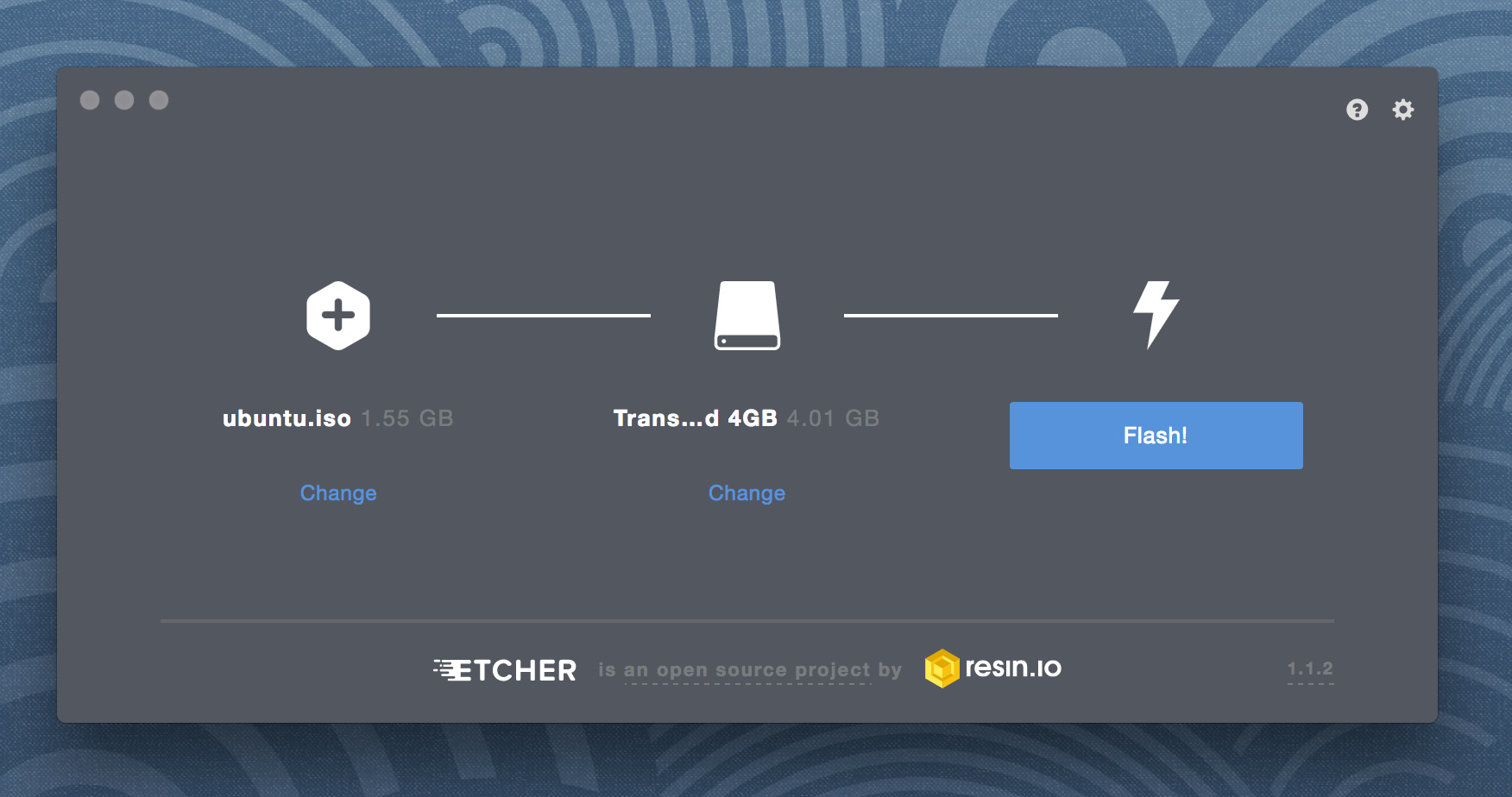

- #CREATE BOOTABLE USB ON MAC FOR LINUX HOW TO#
- #CREATE BOOTABLE USB ON MAC FOR LINUX MAC OS X#
- #CREATE BOOTABLE USB ON MAC FOR LINUX MAC OS#
- #CREATE BOOTABLE USB ON MAC FOR LINUX PORTABLE#
- #CREATE BOOTABLE USB ON MAC FOR LINUX VERIFICATION#
To catch up with the guides like dual booting, we will sooner share details about it. If you still have any queries on creating a bootable USB disk from Linux USB drive for Mac, then you can ask from us any time. We hope that this guide will make your job a little bit easy and convenient for you.
#CREATE BOOTABLE USB ON MAC FOR LINUX HOW TO#
The question is how to create such a bootable USB drive from ISO file. It will remove all queries and you can well know whether you have proceeded this step correctly or not. Making a bootable USB drive is necessary as it would help you fix emmergent cases when something goes wrong with the computer.
#CREATE BOOTABLE USB ON MAC FOR LINUX VERIFICATION#
This testing and verification phase is very important for you. Once you follow all these steps of this guide, this whole lengthy processing and job will become easy for you.
#CREATE BOOTABLE USB ON MAC FOR LINUX MAC OS#
This is all about this guide, this is how you can create and boot from a Linux USB drive on Mac system of yours. What youll need to create a bootable installer A USB flash drive or other secondary volume formatted as Mac OS Extended, with at least 14GB of available storage A downloaded installer for macOS Monterey, Big Sur, Catalina. Moreover, when Apple tune starts and initiates up, then you need to keep on pressing and holding the option of Alt key. For that, you have to plug in the bootable USB and after that, you have to allow your system to go through the booting process. Moving to the last step of this process! It is about checking as well as verifying your newly created and upgraded bootable USB disk. Step 7: Check And Verify Your Newly Created and Developed Bootable USB Disk On this step, your bootable USB disk is all set and ready.



Once it is going to be ejected, then you can click on the Ignore button present in the dialogue box. Simply access the terminal and use the respective command for the sake of ejecting your USB disk. Upon getting this message, there is no need to click on the options that states Initialize, Ignore or on the button of Eject just now. This box will communicate a message to you that the disk that you inserted, it failed to get readable from your PC computer system. When you see that this specific command known as dd command is done with its processing, then you will get a dialogue text box. Step 6: Complete the Process Linked to a Bootable USB Drive This step will take a few of the minutes of yours to proceed and move onto the next step.
#CREATE BOOTABLE USB ON MAC FOR LINUX MAC OS X#
If you fail to remember the USB drive number of yours, then there is a chance that you may corrupt and infect your Mac OS X system. Furthermore, you need to use it with much care and caution. This is one of the powerful commands that you can use and try out. Now you have entered into the process of creating and developing a bootable version of the USB drive. First: Prepare the USB drive Create a bootable USB drive with Etcher Create a bootable USB drive with Terminal. Step 5: Creating the Bootable Version of USB Drive As soon as you get the disk number, then the next proceeding is going to be started. Still, if you think that there are chances and probability of confusion, then it will better if you plug and insert just one USB drive. You can identify and know about the USB disk of yours on the basis of its size. All without leaving any traces on the host computer system that the removable media was booted from.Once you enter the command, then a list will be provided to you in which you will get all of the disks information that is installed in your system. Enabling you to walk up to any available PC, insert a thumb drive, do your work, shut down, unplug the device and carry on with your day. This site provides tutorials and tools that make booting a computer from a removable UFD, easy. Helping You make Live Linux Boot from USB since 2006 Resulting in your own custom personalized bootable diagnostic tool kit that you can put on a keychain or carry in your pocket. Multibooting allows you to store and run several Linux operating systems, Windows installers, Windows to Go, Windows PE, system diagnostic utilities, antivirus scanners, penetration testing, cloning tools, backup tools, and more, all from the same removable device. You can also Boot Multiple ISO files from a flash drive or micro sd card by using Multiboot Installer tools like YUMI to create a Multisystem UFD.
#CREATE BOOTABLE USB ON MAC FOR LINUX PORTABLE#
Take your portable operating system with you to run at any computer that can boot from a USB device. Boot and run your favorite operating systems and CD tools from a USB drive.


 0 kommentar(er)
0 kommentar(er)
